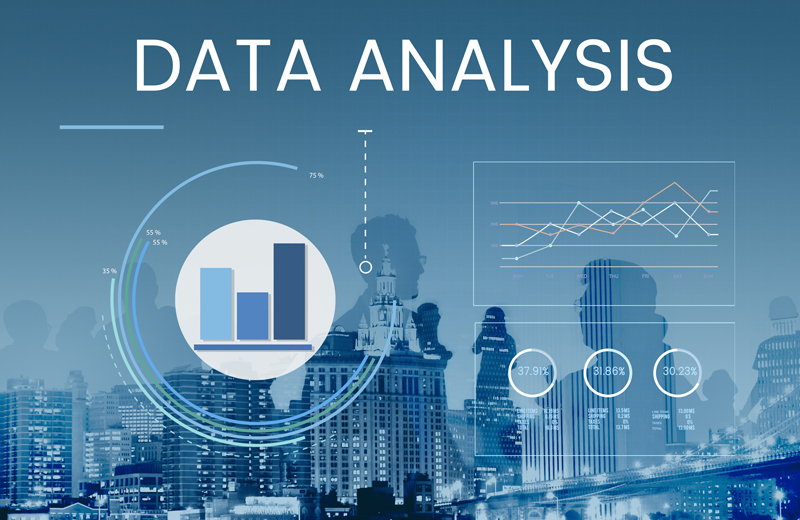Gone are the days when marketers targeted an audience and created campaigns based on intuition alone. Today, effective marketing is based on data analytics. Simply put, it removes the guesswork.
We can now collect a huge amount of data from our online marketing efforts, much too much data for us to make heads or tails of without data analytics software and methods. Data analytics helps us to collect, process and analyze data to gain insights into consumer behavior, campaign performance and market trends. By understanding what works and what doesn’t, marketers can make better-informed decisions, allocate resources more efficiently, target the right audiences and refine messaging to a degree that was never before possible.
There is a reason that:
· 3 out of 5 organizations use data analytics to drive business innovation
· 91.9% of organizations achieved measurable value from data and analytics investments in 2023
What We Can Accomplish with Data Analytics in Digital Marketing
1. Audience Segmentation and Targeted Marketing
Using data analytics, you can segment your audience more finely than ever before, and market to each segment separately. By analyzing data on consumer behavior, preferences and purchasing patterns, marketers can create highly personalized campaigns that resonate with each of their audiences. This targeted approach increases the likelihood of engagement and conversion, leading to higher ROI.
2. Performance Measurements
Continuous monitoring and analysis of campaign data enable marketers to measure the effectiveness of their efforts in real-time. Digital marketing metrics such as conversion rates, ROI, click-through rates, cost per lead, conversion rate and page views, enable marketers to measure the effectiveness of their marketing campaigns and how to change them in the future for better results.
3. Predictive Analytics
Through predictive analytics, marketers can forecast future trends and consumer behaviors. By analyzing historical data, you can identify patterns and predict outcomes, enabling proactive decision-making. This foresight helps you to stay ahead of the competition, see emerging opportunities, and jump on them!Better Budgeting
4. Better Budgeting
Every penny counts when you’re running a small business. You need to know the ROI and other relevant measurements of your marketing campaigns. Data analytics helps in identifying the most effective channels and strategies, reducing wasted spend on ineffective tactics. After all, you want to spend your money where you will see results while keeping costs down.
5. Competitive Analysis
One of the great things about data analytics is that it can help you gauge the strengths and weaknesses of your competition. What is your competition doing that customers love? Where are they missing the boat? And just as important, what are they doing to successfully market to their customers?
If you want to be successful, you need to know what other companies in your space are doing. You don’t always need to recreate the wheel, and you can also learn from the mistakes of others. You are not going to be able to stay ahead of your competition and offer your customers something better unless you know what your competition is doing.
Tips to Using Data Analytics in Your Digital Marketing
1. Track Data From All Your Channels
Be sure the right hand knows what the left hand is doing in your marketing. You must look at all your data as a whole, not silo it according to channel. For example, if you track activity on your website and social media but ignore phone and in-person communications, you are going to get a skewed view.
2. Gather Data to Track Your Customers’ Journeys
You can gather all kinds of data, but be sure to gather as much as you can about your customer’s journey. For example, if you are tracking your website, where did they come from before your website? Where did they go on your website, what did they do and how long did they stay? Where did they go when they left your website? Cover as many touchpoints as possible.
Data gathering and analysis is the beginning of creating campaigns that answer your customer’s needs for where they are in the sales funnel and for where their interests lie. You can track what works and what doesn’t.
You can also check on whether something working on one of your channels is floundering in another. Are they devouring your short-form videos on social media but ignoring them on your website? Why is that, and what can you do to provide your customer with what they need?
3. Determine What Data You Want to Gather and Track
Before you can set up tools to gather data, you first need to figure out just what it is you need. On a broad level, that may be data about your website, social media, email campaigns and customer feedback.
Tools and Technologies for Data-Driven Marketing
There is a wide array of data analytics tools including holistic tools that will address your marketing as a whole. Before choosing tools, take a deep dive into what is available and which bells and whistles you need. There are different types of marketing analytics tools. They range from free apps to systems that coordinate your data across all your marketing and sales. Here’s an overview:
Google Analytics is where you should begin. Every marketer today needs to understand how to effectively use Google Analytics to track what’s successful on a website or an ad, what’s driving traffic and how users are responding and engaging with content. And it’s free!
Customer Relationship Management (CRM) Systems such as HubSpot and Salesforce can give you a holistic view across your marketing, customer service and sales efforts.
Marketing Automation Platforms such as Salesforce’s B2B Marketing Automation Platform (formerly Pardot) and Marketo enable you to integrate your channels and automate repetitive tasks. Of course, they also give you detailed analytical reports.
Social Media Analytics Tools help you to track engagement, understand your audience and see what’s working. Examples of popular social media tools are Hootsuite and Sprout Social.
Email Marketing Analytics may be found alone or on good email platforms. Mailchimp is one such platform with which we are all familiar.
Resources for Data Analytics Tools can be found in these three articles:
12 Essential Marketing Analytics Tools for 2024 (Free and Paid)
16 Best Marketing Analytics Tools to Use in 2024
8 marketing analytics platforms to simplify your data analysis processes
Ready to Up Your Data Analytics Game?
Data analytics is constantly evolving, and, it’s extremely hard to keep up with data analytics innovations while you are focusing on your core business. If you would like help from an expert who knows data analytics inside and out, contact us through the INLocal Marketing website or call us at (646)440-1426.






